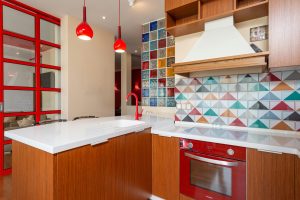Multigenerational Housing: ADUs Solving Family Space Crunches
If you’ve been keeping an eye on the real estate market in recent years, you may have noticed a growing trend towards multi-generational housing. As the cost of living continues to rise and families seek to support aging parents or adult children, many are turning to the idea of adding an accessory dwelling unit (ADU) to their property. These smaller, self-contained living spaces provide a practical solution for families facing the challenge of limited space. In this article, we’ll explore the concept of multigenerational housing and how ADUs are proving to be an effective solution for families tight on space.
The Rise of Multigenerational Housing
Since the 1980s, the number of multigenerational households in the United States has been on the rise. In 2016, a record 64 million Americans lived in homes with at least two adult generations, according to Pew Research Center. This trend has been attributed to a variety of factors, including the increasing number of families caring for aging parents and the economic pressures of raising a family in today’s world.
One major advantage of multigenerational housing is the ability to share expenses and pool resources. In other cultures, multigenerational housing is common and is seen as a way to strengthen family ties and support one another. However, in the United States, this type of living arrangement is relatively new and typically involves the construction of an ADU, also known as a granny flat, in-law unit, or coach house.
What is an ADU?
An ADU is a secondary living space that is built on the same property as an existing single-family home. It can take the form of a separate unit, such as a guest house or a converted garage, or can be an addition to an existing home. The key feature of an ADU is that it is self-contained, with its own entrance, kitchen, bathroom, and living space. This allows for total privacy and independence for both the main house and the ADU.
One of the main benefits of an ADU is that it can provide affordable housing options for extended family members. It also allows for a flexible living arrangement where the occupants can come and go when necessary. This can be particularly beneficial for families with aging parents who require additional assistance or for adult children who are saving up for their own home.
The Benefits of ADUs for Multigenerational Families
There are many reasons why ADUs are gaining popularity as a solution for multigenerational housing. Here are some of the top benefits that families can enjoy from having an ADU on their property:
1. Increased Property Value
Adding an ADU to your property can significantly increase its value. Not only does it provide additional living space, but it also offers the potential for rental income. This can be a major selling point for future buyers, especially in areas where space is at a premium.
2. Cost Savings
As mentioned earlier, sharing expenses is one of the primary motivators for multigenerational housing. With an ADU, both the main house and the secondary unit can share some of their expenses, such as utilities and maintenance costs.
3. Privacy and Independence
Living in close quarters with extended family members can be challenging at times. An ADU provides a separate living space, giving everyone the freedom and privacy they need.
4. Aging In Place
For seniors who want to age in place, an ADU can provide an ideal solution. By having a secondary living space on the same property as their adult children, seniors can maintain their independence while still being close to their loved ones who can provide assistance when needed.
The Future of Multigenerational Housing
With the demand for more affordable and flexible housing options, the rise of multigenerational housing is likely to continue. ADUs will play a significant role in this trend, offering a practical and cost-effective solution for families looking to accommodate multiple generations under one roof.
As urban areas become more densely populated, ADUs may also offer a way to address the issue of housing affordability in cities. Many local governments are now recognizing the potential of ADUs and are making it easier for homeowners to add them to their properties.
Conclusion
Multigenerational housing is an increasingly popular living arrangement that offers many benefits for families facing the challenge of limited space. ADUs are proving to be an effective solution for this growing trend, providing increased property value, cost savings, privacy, and flexibility for multigenerational families. As the demand for affordable housing continues to rise, the future looks bright for ADUs and the role they play in providing practical living solutions for families across the country.











